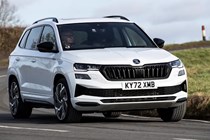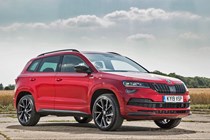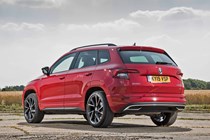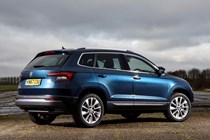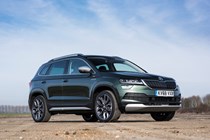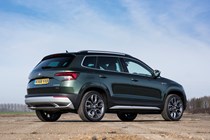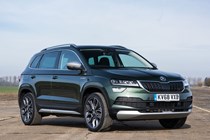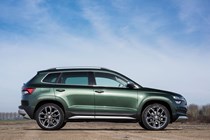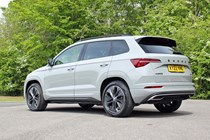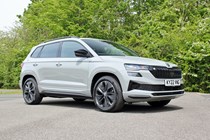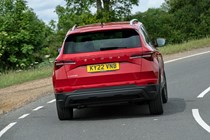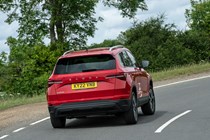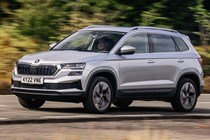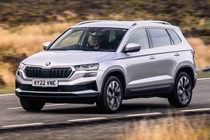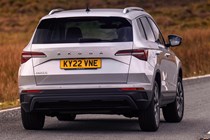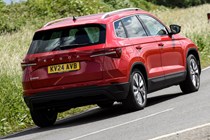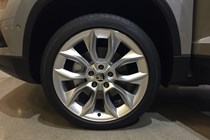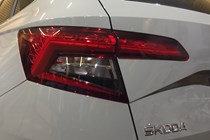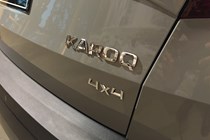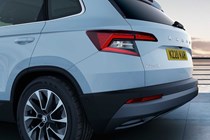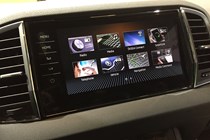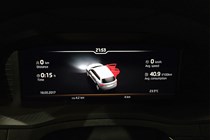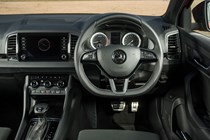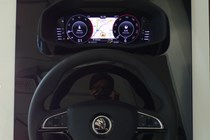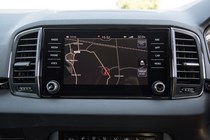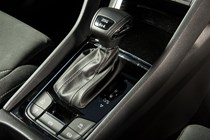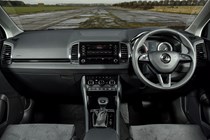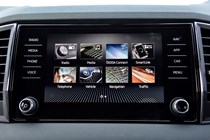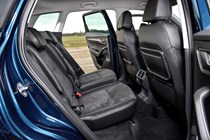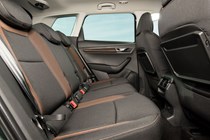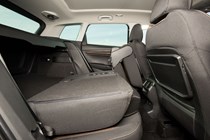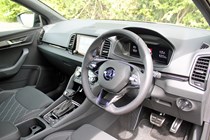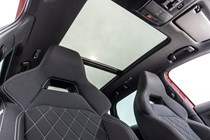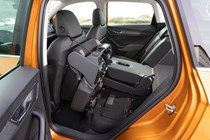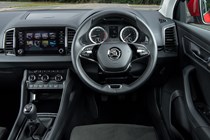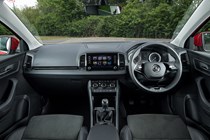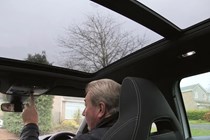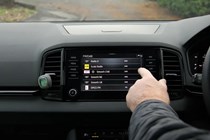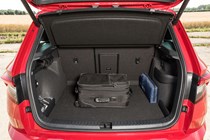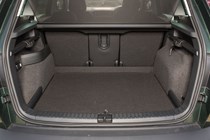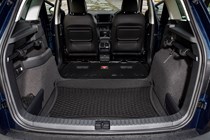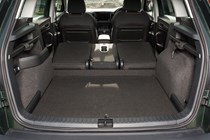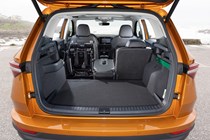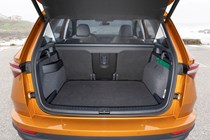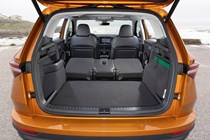
Skoda Karoq engines, drive and performance
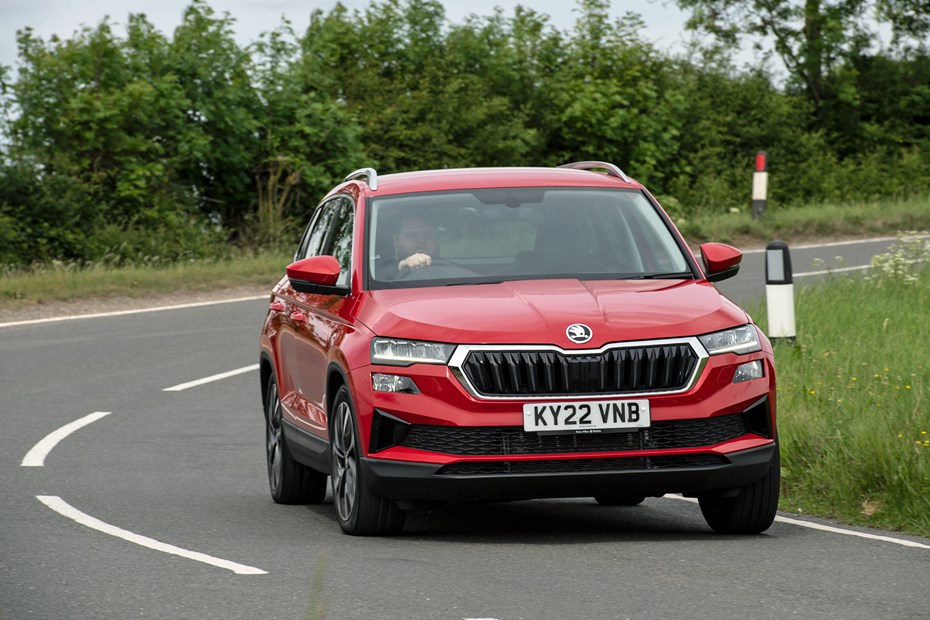
- Choice of high-tech petrol and diesel engines
- Mid-spec choices offer enough performance
- Base 1.0-litre TSI can feel breathless
Petrol engines
The Skoda Karoq is available with three petrol engines: a three-cylinder 1.0-litre, a four-cylinder 1.5 litre and a four-cylinder 2.0-litre. Each is badged TSI Evo, meaning they are turbocharged and feature very up-to-date technology.
The entry-level 1.0-litre 115hp petrol is refined and perfectly capable around town. But it does begin to struggle on motorways and during overtaking manoeuvres. If you’ll be regularly loading up the car with passengers and luggage or doing lots of long journeys it’s probably best to avoid this one.
The 150hp 1.5-litre petrol is far punchier, offering noticeably better acceleration and motorway pulling power. And with cylinder deactivation technology alongside its extra muscle, shouldn’t prove much less efficient in the real-world, where we’ve easily achieved over 40mpg. A good place to start if you might be planning to switch away from diesel.
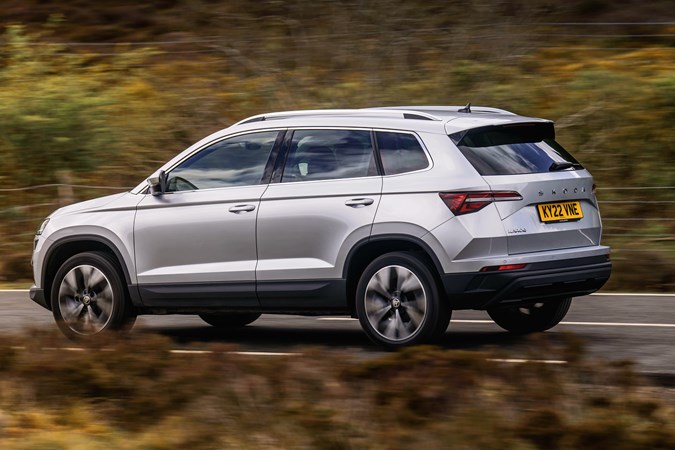
The range-topping 190hp 2.0-litre engine is only available in Sportline trim. It’s also the only engine to come as standard with the seven-speed DSG automatic transmission and four-wheel drive – every other Karoq has front-wheel drive and a six-speed manual gearbox as standard, though DSG is optional on all but the 1.0-litre TSI. The automatic version can be lazy to drive.
In his long-term test, our reviewer Percy Lawman said of the transmission: ‘This is one car you have to take your time in, queue patiently and relax at junctions. There’s a split-second between pulling away, pressing the throttle a touch harder and getting away. Initially I thought I might have left the drive mode in Eco, but no, it’s in ‘Normal’. To compensate, I’m finding myself selecting ‘Sport’ mode and using the paddleshifters to change gear.’
The 190hp Karoq is a fast, comfortable mode of transport that covers ground quickly with remarkable ease, the engine’s keen responses are accompanied by a throaty growl that’s unobtrusive but just enough to remind you that you’re driving something a little bit special. Percy added on his Sportline: ‘Once it gets going, the Karoq shifts plenty quick enough in Normal and Sport mode. There’s a bit more engine noise in Sport mode, as you’d expect, but the ride is notably quiet.’
Diesel engines
The facelifted Karoq diesel range consists of two variants of the Volkswagen Group’s 2.0-litre TDI turbodiesel engine, providing 116hp or 150hp – the latter with the option of four-wheel drive.
Choosing the 150hp 2.0-litre TDI would have been considered the safe option a short time ago – and it’s not hard to see why. While a touch noisier than you might want, it’s got enough pulling power on motorways and is the motor of choice if you plan on using the Karoq as a tow car. And even if diesel cars are going out of fashion it should still deliver superior long distance mpg compared with petrol models.
It’s a fair bit heavier than the equivalent 150hp TSI petrol model, so has slightly blunter performance. But should certainly prove the most fuel efficient of any Karoq model available. The less powerful 116hp diesel is adequate for most needs, and a little better on the motorway than the 115hp petrol, but don’t expect it to be a rocketship.
What’s it like to drive?
- Sharp handling sacrificed in the pursuit of comfort
- Still perfectly stable and grippy on all roads
- Off-road ability will almost certainly exceed customers’ needs
Despite sharing a platform (and many mechanical components) with the SEAT Ateca, the Skoda Karoq feels significantly different to drive. Rather than go down the route of making the car feel sharp and ‘sporty’, Skoda has engineered the Karoq to be soft and comfortable. This makes it great over long distances, thanks in large part to suspension that effortlessly soaks up bumpy and broken surfaces.
That’s not to say it isn’t nice or even fun to drive, it just has a rather more relaxed way of doing things. The steering for example, while accurate and well-weighted, isn’t particularly sharp or communicative – though you can option ‘progressive steering’ if you do want to liven things up a bit, while Dynamic Chassis Control gives you variable suspension with a choice of settings.
In normal driving conditions, the Karoq flows nicely from corner to corner and, despite its relatively large size, is easy to pilot through narrow city streets and tight turns. Push faster into corners and you’ll start to notice the body of the car roll, although never to the extent where it feels wayward or unsafe.
Grip levels are about average for a car in this class, and – once you do run out of purchase – there’s just enough feel in the steering wheel to let you know the front of the car is beginning to run wide of the intended line. The Karoq’s off-roading credentials should be more than ok for the vast majority of customers, with hill-descent control and an off-road drive mode fitted as standard on 4x4 models.


